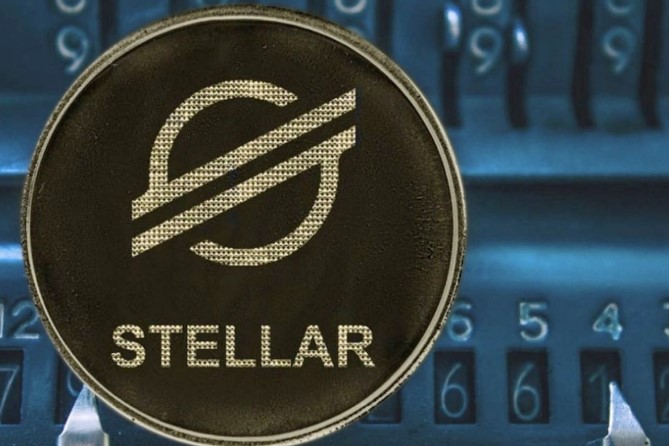
Stellar: Revolutionizing Cross-Border Transactions with Blockchain
Introduction to Stellar
Stellar, a decentralized protocol for digital currency to fiat currency transfers, is designed to facilitate cross-border transactions quickly and with minimal fees. Launched in 2014 by Jed McCaleb and Joyce Kim, Stellar has garnered attention for its focus on financial inclusion and efficiency in the global financial system.
How Stellar Works
At its core, Stellar operates as a decentralized network that enables peer-to-peer transactions. The protocol uses a consensus mechanism called the Stellar Consensus Protocol (SCP) to validate transactions and maintain the integrity of the network. Unlike traditional banking systems, which rely on centralized authorities, Stellar’s network is distributed across multiple nodes, ensuring transparency and security.
Key Features of Stellar
Fast and Low-Cost Transactions
One of Stellar’s primary advantages is its ability to process transactions quickly and at a fraction of the cost compared to traditional banking methods. This makes it ideal for individuals and businesses looking to transfer funds across borders without incurring hefty fees.
Cross-Border Payments
Stellar’s platform facilitates seamless cross-border payments, enabling users to send and receive money in different currencies with ease. This is particularly beneficial for individuals living in countries with limited access to traditional banking services.
Smart Contracts on Stellar
In addition to facilitating payments, Stellar also supports the creation and execution of smart contracts. These self-executing contracts are programmed to automatically enforce the terms of an agreement when predefined conditions are met, further enhancing the platform’s utility and versatility.
Use Cases of Stellar
Stellar’s technology has been embraced by various industries for a wide range of use cases, including:
Remittances
Stellar enables migrants and expatriates to send money back to their home countries quickly and affordably, bypassing the inefficiencies of traditional remittance channels.
Micropayments
With its low transaction fees and fast settlement times, Stellar is well-suited for facilitating micropayments, such as online tips and small digital purchases.
Tokenization of Assets
Stellar’s platform can be used to tokenize various assets, including real estate, stocks, and commodities, making it easier to trade and transfer ownership of these assets on a global scale.
Stellar vs. Other Cryptocurrencies
While Stellar shares some similarities with other cryptocurrencies like Bitcoin and Ethereum, it also boasts several unique advantages:
Comparison with Bitcoin and Ethereum
Unlike Bitcoin, which primarily serves as a store of value, and Ethereum, which focuses on smart contracts and decentralized applications, Stellar is specifically designed for facilitating fast and affordable cross-border transactions.
Advantages of Stellar
Stellar’s consensus mechanism and scalability make it well-suited for handling a high volume of transactions, making it a preferred choice for businesses and developers seeking to leverage blockchain technology for financial purposes.
Stellar Lumens (XLM)
Stellar Lumens (XLM) is the native cryptocurrency of the Stellar network and serves as a bridge asset for facilitating transactions between different currencies. XLM can also be used to pay transaction fees and participate in the governance of the Stellar network.
Stellar Development Foundation (SDF)
The Stellar Development Foundation (SDF) is a non-profit organization dedicated to supporting the development and adoption of the Stellar protocol. SDF funds various initiatives aimed at promoting financial inclusion and advancing the use of blockchain technology for social good.
Challenges and Future of Stellar
While Stellar has achieved considerable success in revolutionizing cross-border payments, it still faces challenges such as scalability issues and competition from other blockchain platforms. However, with ongoing development efforts and a growing ecosystem of partners and users, Stellar is well-positioned to overcome these challenges and continue to drive innovation in the fintech space.
Conclusion
In conclusion, Stellar has emerged as a powerful force in the world of blockchain technology, offering fast, low-cost, and accessible solutions for cross-border transactions. With its focus on financial inclusion and efficiency, Stellar is poised to play a significant role in shaping the future of global finance.
Unique FAQs:
- Is Stellar a cryptocurrency? Yes, Stellar operates as a decentralized protocol for digital currency to fiat currency transfers, with its native cryptocurrency being Stellar Lumens (XLM).
- How does Stellar differ from traditional banking systems? Unlike traditional banking systems, which rely on centralized authorities, Stellar operates as a decentralized network, enabling peer-to-peer transactions without intermediaries.
- Can Stellar be used for more than just payments? Yes, Stellar’s platform supports the creation and execution of smart contracts, making it suitable for a wide range of applications beyond simple payments.
- What is the role of the Stellar Development Foundation (SDF)? The Stellar Development Foundation (SDF) is a non-profit organization dedicated to supporting the development and adoption of the Stellar protocol, funding initiatives aimed at promoting financial inclusion and social good.
-
How can I acquire Stellar Lumens (XLM)? XLM can be acquired through various cryptocurrency exchanges or earned through participation in the Stellar network as a validator or contributor.